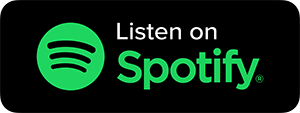
Not Having the Right Data Can Cost You
At that time, Glenn and intelliHR founder Rob Bromage saw a distinct gap in the market. Hardly anyone was leveraging all of their valuable HR data to add value and make their organizations better. HR was typically in the back seat, when it should have been driving—or at least influencing—key business decisions.
The best software doesn’t simply collect data; it uses that data to proactively identify critical insights.
Today, intelliHR is a publicly listed HR tech business that develops leading-edge cloud-based people management software with a view to doing just that. When Glenn and I sat down to talk about how SaaS is changing the game for HR teams everywhere, he had some fascinating stories to share about the impact HR data can make for a business.
Yes, HR is about humans—but data can help
Over the years, HR has developed a reputation for valuing “gut feel” over data. While there’s certainly value to be had in preserving the intuitive element of hiring, it can also land organizations in hot water if (and when) bias creeps into the equation. And turning a blind eye to fact-based evidence never helped anyone.
Industry-wide, HR still has some room to grow in terms of how data is used. But Glenn and the intelliHR team are determined to help their clients get there by focusing not just on data, but on education.
Gathering data helps, but even the best data is useless if you aren’t sure how to use it.
Glenn shared the story of a client company that was pleased with their overall attrition rate, on par with industry benchmarks at 10%. When the intelliHR team dug into the data, they found something interesting: 60% of that attrition came from a single team. Not only that—it could be traced back to a single manager.
When they cross-referenced exit interviews, a story emerged. One hiring manager had cost the company at least $200,000 in attrition, something high-level data would never have shown them. It took more than data to get them to this particular insight; what it took was knowing how to explore the data they had.
Using data well means going a step beyond collecting and collating data. If you go no further than speeding up the collection process, or replicating lines on a spreadsheet because you’re used to seeing them, you’re missing out in a big way.
Using design thinking to reimagine legacy processes
Another pitfall Glenn sees is the tendency for businesses to automate legacy processes, making them faster instead of asking if they make sense in the first place. That’s why he’s a firm advocate for using design thinking to revisit existing processes and determine whether they still work, or if they could use a tune-up. “Without design thinking, our implementations would be easily 50% less successful,” he told us.
Looking for inspiration? Here’s one example Glenn shared of a design thinking exercise that only takes a few minutes:
- List the number of people involved in an inherited process; for example, onboarding a new employee. You might list the supervisor, an HR contact, and the new employee.
- Now look beyond the obvious answers to include anyone you missed, like other team members involved in training, team mentors, or finance team members. Who needs to sign off on skills or new hire paperwork? Who spends time running orientations and trainings?
- The list is probably longer than you think. That doesn’t mean that it’s wrong—just that it’s worth investigating each process in this way to see if your processes are as effective as they can be.
Using this simple list method, one client of Glenn’s found that 20 different people were involved in ordering new employee uniforms. Over the years, a simple task had reached a needless level of complexity that cost the company money, time, and probably a level of workplace satisfaction.
When adding software to your tech stack, remember that the goal shouldn’t be to replicate existing processes. The aim is to replace them with processes and tools that work better, not just faster.
Data-driven insights are a self-fulfilling prophecy
One of the core benefits we see in HR SaaS is communal learning. The more data we have, the more SaaS products can improve to help other organizations identify and solve similar challenges. More and more businesses are changing the structure of HR to include recruitment marketing and talent acquisition teams, but smaller teams don’t always have the resources for that much specialization.
If a full-fledged people analytics team isn’t in the cards for you, SaaS tools like intelliHR can democratize access to data-driven insights. And as those tools work with a broader array of businesses, they get better over time at seeing patterns and helping proactively identify leading indicators before there’s a full-blown problem.
HR is still often treated as an administrative branch of an organization, but that’s starting to change. More and more, HR teams help drive business decisions rather than simply implement them.





